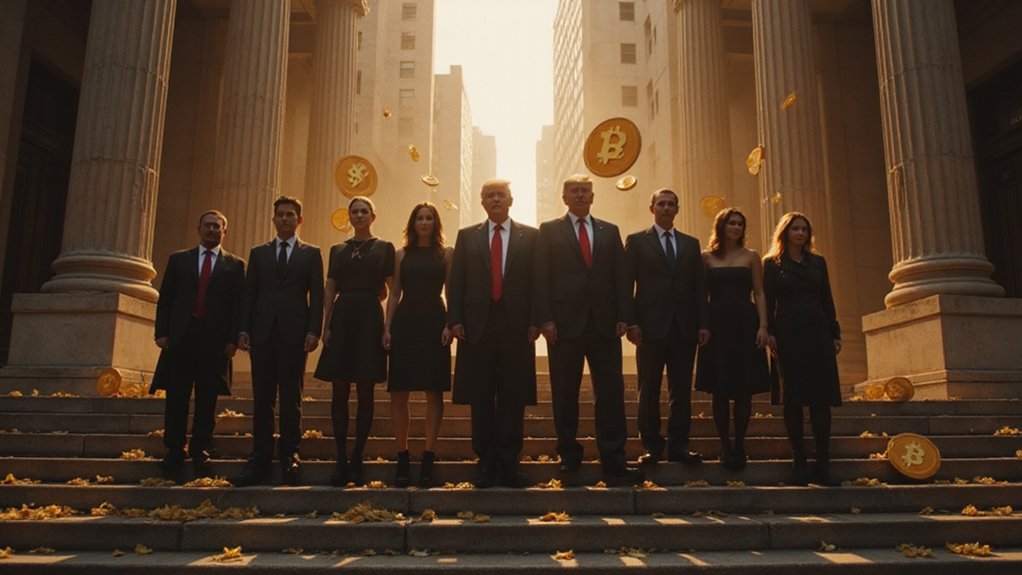The meteoric rise of stablecoins—digital assets designed to maintain a stable value relative to fiat currencies—has quietly revolutionized the financial landscape while traditional institutions were busy debating their relevance.
With active stablecoin wallets surging 53% to over 30 million in February 2025, the financial sector finds itself confronting what was once dismissed as crypto’s peculiar offspring now emerging as its most pragmatic contribution to mainstream finance.
Transaction volumes tell the tale: $710 billion flowing through stablecoin networks represents not merely speculative fervor but practical utility.
The staggering flow of capital through stablecoin ecosystems signals finance’s digital evolution beyond speculation into everyday utility.
USDT leads this charge with monthly growth rates between 7-20%, while USDC maintains a respectable quarter of total transaction activity—both instruments moving between $85-198 million monthly in a market that never sleeps (unlike traditional banking systems, which apparently require considerable downtime).
Regulatory frameworks have evolved from existential threats to catalysts for adoption.
The SEC’s guidelines delineating “covered stablecoins” backed by liquid assets establish guardrails that, rather ironically, enhance rather than restrict market confidence.
This regulatory clarity—focused on transparency and stability—positions stablecoins as viable challengers to antiquated payment infrastructure.
Their 24/7 availability and instant settlement capabilities make stablecoins particularly disruptive to cross-border payments, where traditional systems remain surprisingly medieval in their efficiency and cost structures.
Financial institutions, once dismissive, now view these digital assets as strategic instruments supporting dollar dominance in global finance.
The 1:1 pegging mechanism provides the stability necessary for practical applications beyond speculation—transactions, savings, and value preservation—while blockchain infrastructure delivers the technological advantages crypto enthusiasts have long evangelized.
Institutional partnerships accelerate this trajectory, particularly in underbanked regions where stablecoins offer digital payment access without traditional banking prerequisites.
As stablecoin liquidity deepens under regulatory compliance, their role as market stabilizers emerges with particular clarity.
Companies like Paxos have pioneered regulated trust solutions that allow enterprises to create their own branded stablecoins while maintaining compliance with financial regulations.
The U.S. President’s recent executive order has further legitimized stablecoins as key financial instruments while halting competing CBDC development efforts.
Businesses have enthusiastically adopted stablecoins due to their ability to reduce operational costs by eliminating intermediaries and offering real-time transaction tracking that simplifies reconciliation processes.
Q1 2025 data reveal these instruments maintaining composure amid broader crypto volatility—suggesting that crypto’s path to mainstream financial dominance may run through its least volatile, most regulated innovation.









